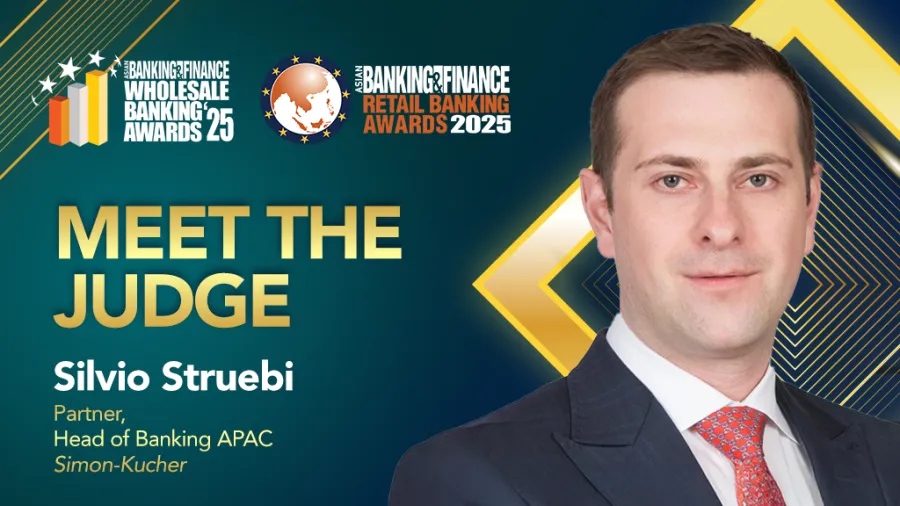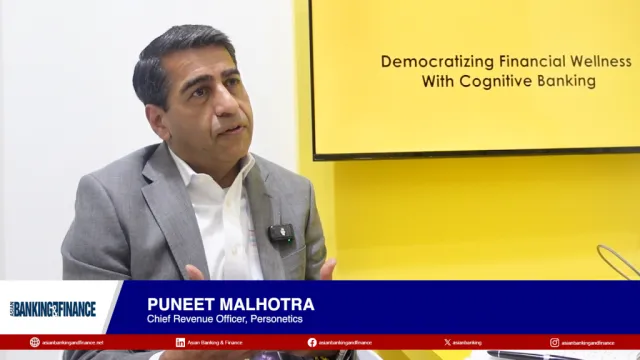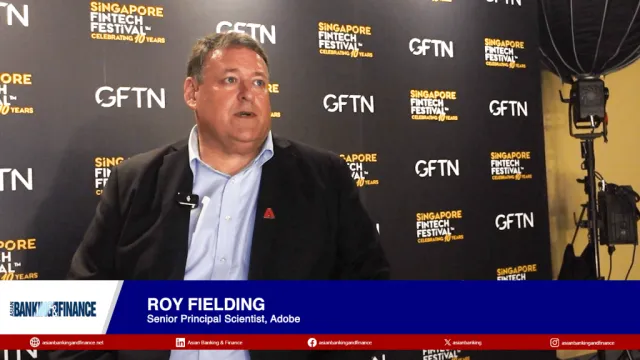
Differentiated commercial strategies: The key to banking competitiveness in Asia – Simon-Kucher’s Silvio Struebi
He discusses transformation, commercial strategy, and innovation in the region’s financial sector.
Financial institutions across Asia-Pacific are facing rapid digital transformation, changing customer expectations, and intensifying competition. To achieve sustainable growth in this environment, differentiated commercial strategies accounting for local market specifics are required.
Silvio Struebi is a Partner at Simon-Kucher, the pricing and growth strategy consultancy, and heads the firm’s banking operations in APAC. He has over 18 years of consulting experience in the financial services sector, having worked with a wide range of financial institutions including Wealth Managers, Retail and Corporate Banks, FinTechs, and Payments firms.
With a recent focus on pricing software implementation and post-merger integration, Silvio’s insights draw on deep industry experience and a strong implementation track record. Before joining Simon-Kucher, he held roles in private banking, asset management, and consulting in Switzerland. He is a frequent speaker at conferences and roundtable discussions, and has been featured in multiple business magazines across Asia.
As a judge at the Asian Banking & Finance 2025, Silvio shared his thoughts on the needs of financial institutions, key regional challenges, and the trends influencing the direction of banking and fintech in APAC.
In your over 18 years of experience in consulting, how have client needs transformed in the financial services sector?
Priorities have changed. After the global financial crisis, the focus was predominantly on risk mitigation, regulatory compliance, and operational resilience. Whilst these remain important, the strategic focus has switched toward enterprise-wide transformations.
Today, digital is no longer on the sidelines, it is central to the operating model and processes of every leading bank. What were once isolated digital experiments are now mature, integrated transformation programmes. Banks have been modernising their technology stacks through cloud migration, embedding advanced analytics capabilities into decision-making and client servicing, and reimagining customer engagement.
This transformation has also prompted a redirection from product-led and relationship manager (RM)-centric models to customer-centric, self-service platforms that compete on client experience and convenience. Data, once underused, is now viewed as a strategic asset. Banks have invested in capabilities to unlock the value of data to drive growth, deepen client relationships, and enable real-time, insight-driven decisions.
Data has become important to every business operation, changing the approach to technology, talent, and organisational structure. A key focus of leading banks in recent months is re-skilling their workforce whilst integrating AI across functions to drive productivity gains.
What are some of the biggest challenges you have encountered whilst leading banking operations in the APAC region, and how did you address them?
Leading regional banking operations means managing diverse markets, fragmented regulations, and varying levels of competition. A key challenge is balancing the region’s preference for speed and short-term wins with the need for long-term, scalable solutions and transformation, which takes more time. We have addressed this by turning quick wins into lasting capabilities and aligning regional initiatives with global strategy.
Despite digital advancements and sophisticated technology, RMs still remain central in almost every bank, especially in the Wealth, Corporate, and SME banking space. We have helped our clients to enhance RM effectiveness through real-time data tools such as relationship pricing software with cross-buying insights. We have also helped clients to build hybrid client coverage models for investment advisory services that blend human touch with digital self-service and execution. Here, the focus is now on AI-based advisory capabilities that will support front-line client engagement and portfolio construction, helping clients take the right investment decisions.
Market saturation is a key challenge that many banks are facing, especially in hubs like Hong Kong or Singapore, where competition is fierce. We have helped banks to differentiate through micro-segmentation strategies, forming ecosystem partnerships (e.g., fintechs, e-commerce players) as well as offering embedded finance and optimising digital customer journeys. These efforts significantly enhanced customer experience and helped to grow revenues.
Regulatory complexity is another important topic, with each market developing its own framework. We recommend modular operating models that allow for local customisation whilst preserving global consistency and compliance. Early engagement with regulators and governments via sandboxes and innovation hubs is useful, especially when navigating emerging areas like AI. Enhanced pricing transparency, as well as fair dealing and fee disclosure practices have also been growing in relevance across many APAC markets. Here, we have supported several banks in implementing solutions that help meet regulatory requirements whilst protecting existing margins.
Finally, the talent gap, particularly in digital and AI roles, continues to be a critical challenge. We have observed that leading banks foster a culture of innovation through internal labs and agile squads, whilst tapping into government-led upskilling initiatives to attract and retain top talent.
How do you tailor commercial strategies to different markets within APAC, given the region’s diversity?
Asia-Pacific is one of the most diverse regions globally, with markets at vastly different stages of economic and regulatory maturity as well as digital adoption. Local nuances and adaptations are essential for success.
In mature markets like Hong Kong and Singapore, data availability, access to loans and financing, and customer sophistication are high. Strategies can capitalise on data and advanced analytics for risk-modelling, or for omnichannel strategies and personalised offerings. These markets often serve as innovation hubs, testing new models that can potentially be adapted to other regions.
Conversely, in some emerging markets across Southeast or South Asia, growth strategies must account for limited data infrastructure, sometimes lower financial inclusion, and varying regulatory environments. Success here depends on building trust, developing foundational infrastructure and credit systems, partnering with fintechs, and leveraging alternative data sources outside of the banking industry, like telco data.
A key differentiator for a regional banking player is the ability to localise go-to-market approaches. This involves adapting product design, distribution models, and partnership ecosystems to reflect local culture, customer behaviours, and economic conditions. In APAC, “one size fits none” – success requires balancing regional scale and standardisation with deep local context.
What advice would you give to financial institutions trying to stay competitive amidst rapid innovation and disruption?
To remain competitive in today’s dynamic landscape, banks should embrace a mindset of continuous reinvention and disruption. Differentiation is key. Offering solutions that reflect diverse client needs and varying willingness to pay will enhance product-client-market fit and unlock new value creation opportunities.
Equally important is delivering consistently on brand promises. Trust is a vital currency, so banks must align their marketing, service delivery, and customer experience closely. We often observe gaps between internally praised solutions or MVPs and actual, real-life client interactions.
Leaders should also be willing to challenge legacy models. Organisational stagnation, often reinforced by hierarchical structures and risk-averse cultures, can be a major barrier to innovation and change. Building a culture of experimentation instead of tight control and risk mitigation can provide more room to explore new solutions.
Failure should be seen as a learning opportunity. It’s easy to talk about change but harder to commit to it. So rather than symbolic gestures, it takes serious investment: In digital capabilities, in people, and in the way work gets done. The banks that will thrive are those that give their teams room to test, iterate, and adapt.
What trends do you see influencing the future of commercial strategy in fintech and payments?
The commercial strategies behind fintech and payments are entering a new phase. Customer expectations are sharper, and technology is more capable. At the same time, regulation is pushing the industry toward greater consistency through standardised payment formats. The result can be seen in several key trends:
From free to fee: Monetisation models have been maturing. Fintechs are moving beyond free end-client services and products, introducing tiered pricing, premium paid features, and usage-based models, especially in B2B and SME segments.
Ecosystem expansion: Often starting from core financial products, players now seek to build or integrate their proposition into broader ecosystems, including e-commerce, logistics, and lifestyle, fostering stronger customer relationships, acquiring new customers, or tapping into new revenue streams like monetizing data.
Value-added services: There is a growing focus on layering services on top of core products such as payments or loans. In the SME space, we often see features such as cash flow forecasting or tax automation. In the retail space, we have seen more financial wellness tools to deepen engagement and drive differentiation from the competition.
Embedded finance: Financial services are delivered seamlessly at the point of need in the everyday lives of customers. This space has been growing a lot in recent years, especially in existing ecosystems such as ride hailing, e-commerce, or gaming as well as SME lending products in SaaS solutions like bookkeeping solutions or restaurant reservation software.
Partnership-driven growth: Fintechs are forming strategic alliances with banks, tech firms, and non-financial platforms such as retailers to scale faster, get access to new markets or ecosystems, and co-create offerings. New models typically enhance existing infrastructure via APIs to other fintechs, platforms, and enterprises.
Recurring revenue models: Subscription and usage-based pricing are gaining traction across various verticals within the fintech space because investors are increasingly prioritising annual recurring revenue over pure growth rates when it comes to funding decisions. Hence, platforms are moving away from offering free services and charging spreads or other hidden fees, towards more transparent fee-based models. Subscription-based pricing, for example, results in more predictable revenue streams and aligns better with customer value delivery.
As a judge in the Asian Banking & Finance Awards 2025, what qualities or innovations are you going to look for in the promising entries?
I am looking for entries that go beyond surface-level innovation and demonstrate real impact. Strong submissions that are backed by concrete examples, clear explanation of how the problem is solved, and evidence of implementation, not just general ideas or pilots. Good examples reflect the unique context of each market, rather than generic regional templates. Banks that invest time and thought into their entries with robust supporting documentation will stand out.
I also pay close attention to resource-constrained financial institutions. It is more difficult for banks with limited size, budgets, or capabilities to deliver meaningful change. Often, simply catching up with incumbents requires greater creativity and resilience, and that deserves recognition.
Lastly, I prioritise forward-looking innovations that signal a shift in how financial services will be delivered in the future, and not just short-term campaigns or new branch models. Personally, I am drawn to entries that reflect fundamental changes in operating models, customer engagement, or ecosystem collaboration.



















 Advertise
Advertise







